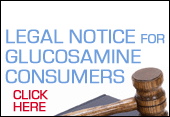|
Since about 2001, the FDA has been taking a deeper look into dangers associated with taking acetaminophen (best known under the "Tylenol" brand name). There are about 600 products on the market that contain acetaminophen and in many instances, consumers are not even aware of it. They include pain, cold and flu remedies that are sold over the counter. Of course, there are also prescription medications like Vicodin that also include acetaminophen in its ingredients.
The FDA is drawing attention to the dangers of acetaminophen use with good cause and, thereby, providing additional confirmation of the warnings that I have made for years in articles on our websites and in our new newsletter.
FDA's Campaign to Educate the Public
Because of its limited resources, the FDA must rely upon other agencies to assist it in educating the public about the dangers of various products that may also have certain health benefits. Unfortunately, those educational efforts are not always successful and, consequently, some people suffer great harm from their use of acetaminophen and other products -- harm that could have been avoided if they had only known of the dangers. According to the information the government is releasing, about 100 million people a year take acetaminophen. While the manufacturers are quick to point out that the number of complications are rare relative to the number of users, the statistics are significant, nonetheless. About 56,000 people a year wind up in emergency rooms as a result of an overdose. As well, about 100 deaths are reported annually. Dr. William Lee at the University of Texas Southwestern Medical Center in Dallas investigated liver failures at 28 hospitals and discovered that over one-third of them were related to acetaminophen use while less than 20% of them were caused by any other medications. He also found that most of the acetaminophen overdoses were accidental and preventable.
The FDA is particularly concerned about accidental life-threatening overdoses of acetaminophen that cause severe liver damage (hepatotoxicity) and, sometimes, result in death or the need for a liver transplant. In September 2002, the Nonprescription Drugs Advisory Committee, along with experts from other committees, examined the evidence of U.S. cases of accidental and unintentional overdoses with acetaminophen and hepatotoxicity and with NSAIDs and related cases of gastrointestinal (GI) and renal (kidney) toxicity and identifed certain risk factors. The advisory committee's discussions and advice are at: http://www.fda.gov/ohrms/dockets/ac/cder02.htm#NonprescriptionDrugs
In January 2004, the FDA's Center for Drug Evaluation and Research (CDER) reiterated the concerns raised by the 2002 investigation when the CDER sent a letter to every State Board of Pharmacy to advise of safety issues for products containing NSAIDs or acetaminophen. With respect to acetaminophen, the FDA identified several reasons why harmful unintentional overdoses sometimes occurred. They included:
consumers did not understand the possible adverse effects of taking at the same time more than one product containing acetaminophen;
consumers did not recognize the potential harm from taking more the recommended dose of medication containing acetaminophen;
the wide variety of products available both over-the-counter (OTC) and by prescription that contain acetaminophen;
consumers did not recognize the active ingredients in various combination prescription and OTC drug products;
container labels for prescription products dispensed by pharmacies may not clearly identify acetaminophen as one of the active ingredients and what the maximum daily dose limit is for acetaminophen.
Protecting Yourself
The FDA has a very small budget for educating the public. Given that fact, the FDA is going to rely on pharmacies to notify consumers about this risk. This is unlikely to solve the problem. Let's face facts. Pharmacies are unlikely to do more than possibly add an additional written warning. There are already written warnings about acetaminophen on products and spread by the media but they have proved ineffective too often. So, what should you do?
- Know how much acetaminophen you are taking and how much is the maximum safe dosage. Take the time to read the labels of every over-the-counter pain, flu, or cold remedy you purchase. Also, check with your physician to find out if any of the medications you are taking contain acetaminophen.
- Consult your doctor when you are taking more than one medication with acetaminophen. Consult with your doctor if you are taking more than one medication or product that contains acetaminophen to ensure that you understand the possible adverse consequences.
- Do not exceed the recommended dose of medications.
- Do not take acetaminophen at all if you have more than three alcoholic drinks. The combination of that much alcohol with acetaminophen can poison your liver.
- If you are taking acetaminophen for arthritis pain, consider using an alternative that has no possible life-threatening harmful effect -- liquid glucosamine. It makes good sense to avoid danger if you can. If you are taking acetaminophen to help with osteoarthritis (OA) pain, you may want to reduce your risk of serious harm by taking liquid glucosamine to help manage your OA pain.
For those who are regular readers of this column, some of this information has been brought to your attention before. Nonetheless, I think it is important enough to warrant your attention again. Please! Read the labels of products you purchase and follow these simple precautions.
J.R. Rogers is the founder and President of Activex America, Inc. makers of Liquid Glucosamine Formula Syn-flex®
Last updated: 1/31/05
|






